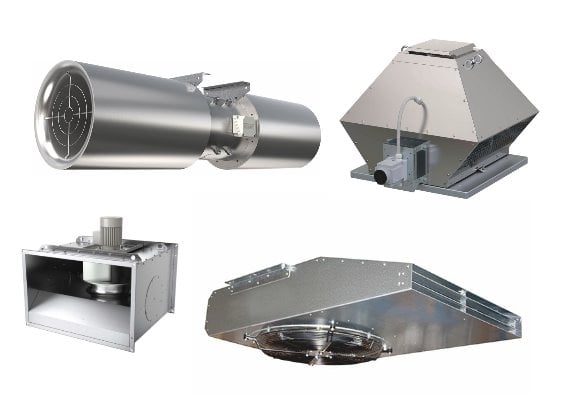Rise in Quick Small Cash Loans Reflects Growing Demand for Immediate Financial Relief in Australia
In Australia, the market for quick small cash loans is expanding at an unprecedented rate as more families seek for short-term financial fixes amid the persistent cost-of-living problem. According to recent data, the market is at an all-time high, with millions of Australians looking to both established and new lending platforms for quick access to emergency finances.
e Quick Cash Loan Market in Australia Hits Record-High Levels
The data shows a remarkable shift in consumer finance. In 2022, the Australian payday loan business brought in $233.4 million, and industry analysts predict that by 2030, that amount will rise to $341.6 million. This puts it among the fastest-growing consumer finance segments, with a compound annual growth rate of 4.9 percent.
According to statistical data, more than 4.7 million individual payday loans totaling over $3.09 billion were approved between April 2016 and July 2019. In times of financial need, these loans helped 1.77 million households by paying for things like urgent auto repairs and unforeseen medical bills that couldn’t wait for regular bank processing timeframes.
The transition to digital lending platforms has sped up significantly. 85.8% of all applications are now for online payday loans, with both younger companies like MeLoan and several well-known lenders providing same-day funding through Australia’s New Payments Platform and expedited approval processes of less than 60 minutes.
Victoria is the state with the most new payday loan applications nationwide, followed by Queensland and New South Wales. Particularly in urban areas where housing and utility costs have increased much above inflation rates, this geographic distribution corresponds with population centers where cost-of-living pressures are most severe.
Economic Pressures Fuel Unprecedented Consumer Demand
According to recent statistics from the banking industry, 10% of Australians who are struggling financially have taken out a payday loan within the last three months. With household spending exceeding income growth across a number of categories, this pattern is indicative of broader economic pressures that have gotten worse before 2020.
It is logically obvious that rising living expenses and loan demand are related. Health care prices increased by 4.8 percent, housing costs increased by 4.7 percent, and energy costs soared by 9.5 percent yearly between 2006 and 2013. For many Australian households, the gap between income and necessities grew as a result of these hikes, which significantly outpaced the Consumer Price Index’s 2.8 percent yearly increase. Since they provide a number of significant benefits over conventional credit products, quick small cash loans have become an essential financial bridge:
- Quick clearance procedures that are usually finished in a few hours as opposed to days or weeks
- less documentation requirements than those for traditional bank loans
- Accessibility for customers with credit histories that are not typical
- Funding for time-sensitive expenses on the same day
- Adjustable repayment schedules in line with pay cycles
Additionally, the demographic makeup of borrowers has changed dramatically. From 177,000 in 2016 to 287,000 in 2019, women currently make up 23.13 percent of all borrowers. The fact that over 41% of female borrowers are also single parents emphasises the unique financial challenges that this group faces.
Regulatory Framework Strengthens Consumer Protections
In late 2022, following six years of lobbying by consumer protection organisations, the Financial Sector Reform Bill 2022 was approved by Parliament, bringing about a significant update to the regulatory environment. The rigorous safeguards imposed by this legislation were intended to prevent the debt cycle problems that previously impacted roughly 15% of payday loan customers. The new regulatory framework established several fundamental protections:
- To ensure affordability, income-proportionate repayment limitations prohibit loan repayments from exceeding 10% of the borrower’s net income.
- Controls over the cost structure: monthly fees are restricted to 4% and establishment fees are regulated at 20% of the loan amount.
- Provisions against circumvention: Tighter enforcement stops lenders from avoiding consumer safeguards
- Limitations on referrals: No one may send rejected applications to other expensive credit providers.
- Improved disclosure standards: More transparent explanation of the entire cost and repayment commitments
Lending practices have improved across the board as a result of these regulatory developments, with both newer players like MeLoan and more established providers putting in place improved responsible lending policies to guarantee adherence to the more robust consumer protection framework.
Access Mechanisms Are Transformed by the Technology Revolution
Access to emergency funding has changed significantly for Australians as a result of the digital revolution. From initial application to fund disbursement and payback administration, modern lending platforms use advanced technology to expedite the entire borrowing process.
These days, customers can fill out extensive loan applications via smartphone apps, and artificial intelligence algorithms evaluate creditworthiness in real time. Lenders may now verify revenue and expense patterns in a matter of minutes instead of days through advanced bank statement analysis via secure portals.
Its integration with Australia’s New Payments Platform is arguably the biggest technological breakthrough. Funds can be deposited into borrowers’ accounts within 60 minutes of loan approval being confirmed during regular business hours. The urgency of the majority of emergency costs is met by this quick turnaround, whether it is for unforeseen medical operations, necessary auto repairs, or utility bills that must be made on time to prevent service interruption.
Growing Industries Raise Concerns About Consumer Protection
Consumer advocacy groups continue to keep a close eye on borrower outcomes and business practices in spite of legislative advances. According to research, even if legal changes have curbed some detrimental behaviors, watchfulness is still necessary to shield susceptible customers from possible abuse.
When borrowing patterns are analysed, alarming patterns of recurrent use emerge. Six separate borrowing occurrences are averaged over a 12-month period, with about 65 percent of payday loan consumers accessing numerous loans. When first-time borrowers need more credit to cover continuing living needs because they are unable to pay back their first loan in full, this pattern frequently appears.
First emergency borrowing, partial repayment capacity, secondary borrowing to satisfy remaining commitments, and progressive debt accumulation across many lending agreements are the usual stages of the debt spiral phenomena. Multiple concurrent quick small cash loan borrowers frequently endure severe stress and may need full debt restructuring aid, according to financial counseling firms.
Warning signs that point to troublesome borrowing habits include:
- Obtaining fresh loans to fulfill current debt repayment obligations
- Borrowing to cover regular costs such as rent or food
- Feeling anxious or having trouble sleeping because of payback worries
- Ignoring financial difficulties while speaking with lenders
- Cutting out on necessities in order to pay back loans
All-inclusive Alternative Support Systems Are Offered
Australian consumers who are struggling financially have a number of options besides expensive, short-term small-loans. Over the course of two decades, more than one million Australians have received $560 million in zero-interest loans under the No Interest Loans Scheme, which is run by Good Shepherd Australia New Zealand in collaboration with National Australia Bank.
An additional $48.7 million has been allocated by the government in recent funding announcements to increase the availability of no-interest loans, with a focus on poor consumers who could otherwise have access to expensive credit products. These initiatives provide organised substitutes for necessary purchases and unexpected costs.
Alternative financial support mechanisms include:
- Repaid over a period of 12 to 18 months, the No Interest Loans Scheme offers up to $1,500 for necessities without any fees or interest.
- For immediate financial circumstances, eligible beneficiaries may receive a portion of future Centrelink advance payments.
- The majority of energy and water suppliers provide emergency assistance grants and payment plan solutions as part of their utility company hardship programs.
- Services for financial counseling: Expert assistance is accessible via a number of outlets, including the National Debt Helpline.
- Disaster help in the community: Local groups offer prompt support for essential needs
Strategic Considerations for Australian Consumers
The fact that quick cash loans are still becoming more popular in Australia highlights the real financial hardships that many different types of people are going through. In times of need, these goods can be a great help, but they must be utilised carefully and with a full understanding of the associated costs.
Before taking out any costly credit, financial literacy experts recommend following a logical approach. This entails calculating the total amount due, including all fees, assessing your ability to make the repayments, and researching other options like family assistance, employer advance programs, or community-based financial aid.
The growth of the quick cash loan industry reflects the growing financial burden that the cost of living is placing on many Australians, but it also emphasises the need for stringent regulatory oversight, consumer education, and readily available alternatives. If used responsibly and within a properly controlled framework, these goods can serve as helpful safety nets rather than long-term problems.




